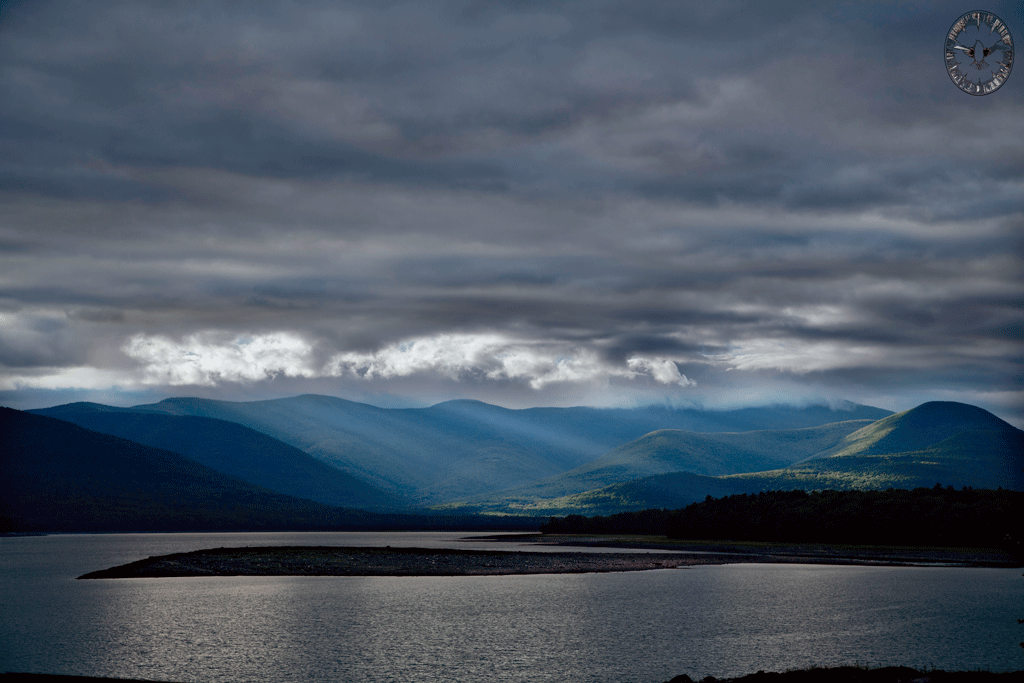My first love in photography is
witnessing the singing presence of Creation. That is the reason
that I have Bellini's St. Francis in
Ecstacy at the bottom of the home page.
I learned my large camera (big cameras
that takes 8" by 10" pieces of film and tip the scales at some 70-100
pounds of gear) technique from
Paul
Caponigro, a master of the medium who taught it as both technique
(the Zone System, et al) and as a meditation. You see the heart
of the image, you pre-visualize it, you set up the camera, frame the
image and then...you step aside with only the shutter release, a thin
cable, linking you to the camera. You center, you focus, you
quiet...and then when every thing is right, you trip the shutter.
At the time I took this image, my
family and I were living in a house on Overlook Mountain above
Woodstock (so high up that we could see over Ohayo Mountain across the
valley to the Ashokan Reservoir beyond). This is what we saw
through the seasons in the two years we lived there. High glowing
summer, ice storms, breaking thunderstorms: I saw them, would pull back
the slider and shoot. This image looks down on the Bearsville
Flats and the back road to Mt. Tremper. In 1985, the property (we'd
been renting) was sold with 27 acres for $87,500.
For those of you who think that traditional photo-chemical imaging
processes are passe, I'd point out that
that camera shoots the
equivalent of a 720 megapixel digital image...while the best digital
cameras shoot a resolution of 6 to 50 megapixels. So it'll be a
while yet before digital electronic imaging can deliver the kind of
resolution and depth of tonality that traditional photgraphic processes
can. Oh, I'll be happy enough when it comes to pass, because the film
and developing costs for one 8"x10" exposure is $50....and the weight
of the camera is just too much to deal with any more.
For the whole Gallery of Hudson Valley landscapes, see here
 Ashokan Reservoir
from the Pumphouse Deck, September 2010, Canon 5D MkII 21MP Digital
SLR, 24-105 Zoom at 105mm
Ashokan Reservoir
from the Pumphouse Deck, September 2010, Canon 5D MkII 21MP Digital
SLR, 24-105 Zoom at 105mm
There isn't the resolution or tonality of the large-format, but it's
pretty good for camera equipment I can hold in my hands...and digital
manipulation allows you to manage tonal ranges that would have been
nearly impossible with "wet"/film based photography. The light in
the clouds was fiercely bright compared to the shadowed landscape in
this image, but it could all be brought together in Photoshop.
I should say that full impact of this image was
brought out by the Photoshop expertise of Angel Cobos of
Laumont Studio in Manhattan; he was the
one who worked with the digital file to bring out both the fierce light
in the clouds and the subtle shadow detail. Kudos also to the
staff and work of the people of Laumont Studio, among them Tom Hurley
in scanning, Jerry Lucid in retouching (he cleaned up dust shadows in
the sky of the top image beautifully) and Phillipe Laumont himself, all
of whom contributed incredible competence, patience, professionalism
and grace. Laumont Studio has the expertise and big equipment to
work digitally with large format film and make large high-end fine
prints from it; their Cibachrome and FujFlex fine prints fully match
the impact of the original Ektachrome transparencies.
Alas, both Kodak and Cibachrome will soon be gone, victims of a
changing photographic world and the ever-increasing profit demands of
the modern business world.
Warning:
What follows is one of
those tiresome artists' manifestos. See
also here
This image speaks to another aspect of spirituality that manifests in
photography: Creation is always there, always happening; its
revelations and annunciations are all around us, if we but look.
Somewhat before I took this image, I was busily speeding on my way and
all in my head with being late and thethingsIhadtodo....I was whipping
over the Reservoir weir when the small voice (that we should all listen
to more) said, 'Hey lookit that'. And thankfully I really
did....and I stopped and really opened to seeing....and saw and took
this image.
We all need to take more time to see and breathe.
I have mixed feelings about Photoshop: for me, the central gift of
photographic imagery is that it can bring back
what was there. Not some
sliced and diced weird artist's imaginative interpretation, but the
revelation, the annunciation of life, its very essence. For me,
photography is witness. The imagery is about opening to vision,
not imposing my vision.
Photography
alone of the art
forms can do that. Alas, so much of "contemporary" photography is
about being as wiggy as the other art forms, about producing images
that are as plastic, non-realistic and of an internal vision, that are
"significant" and "challenging" and "troubled" and "visionary".
My classic work (in the vein of Strand, Steiglitz, Adams, Caponigro)
is, alas, quite out of vogue.
Hope you like it.



